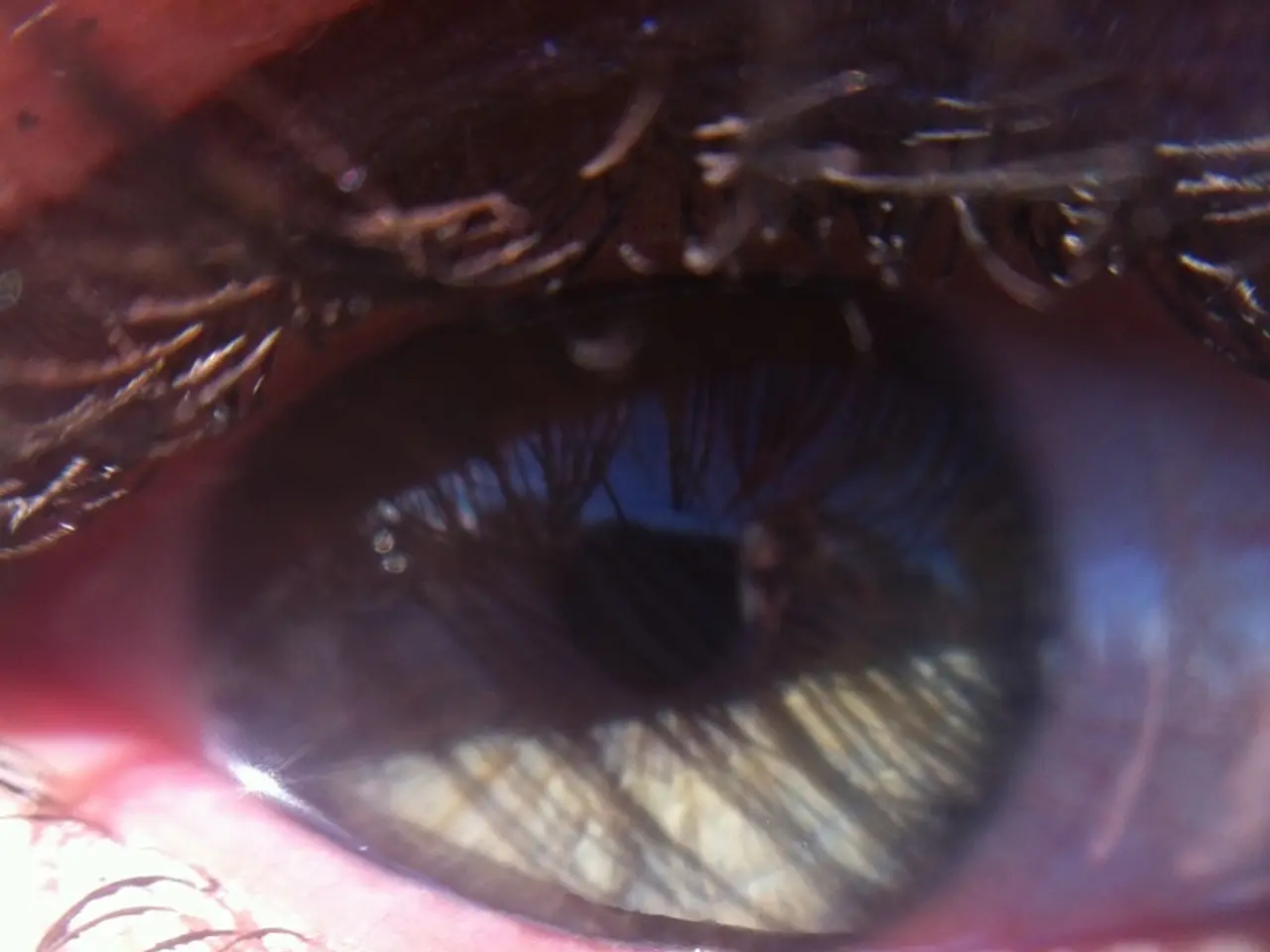Sore Eyes: The Underlying Factors Explained
Burning tears can be a bothersome and uncomfortable experience, but understanding their causes can help find effective relief. Common culprits include environmental irritants, allergies, dry eyes, eye infections, blepharitis, and blocked tear ducts.
Reflex tears, produced in response to environmental irritants like smoke, dust, sand, or soap, contain higher salt concentrations than regular tears, which can cause a stinging sensation when they come into contact with the eye surface. Allergic reactions to pollen, dust, or other irritants during specific seasons can also cause the eyes to burn and itch.
Dry eyes, resulting from insufficient tear production or rapid tear evaporation, can lead to irritation and burning. The tear film, which keeps the eyes moist, can become ineffective when the tears evaporate too quickly or the lacrimal glands are not functioning properly.
Allergic conjunctivitis and other eye inflammations can cause redness, itching, tearing, and burning. A blocked tear duct may exacerbate tear stagnation and cause inflammation or infection.
For immediate relief from burning tears, warm or cold compresses can be used. Artificial tears or lubricating eye drops can help soothe dryness and flush out irritants. Over-the-counter antihistamine or anti-allergy eye drops can provide relief for allergy-related burning, under guidance or prescription if persistent.
Good eye hygiene is crucial. This includes washing hands and face, avoiding contact lens misuse, and not rubbing eyes to prevent worsening symptoms or infections. Limiting exposure to allergens, smoke, dust, and other irritants; keeping windows closed on high pollen days; using HEPA air filters; and regularly washing bedding and pets can help reduce the burning sensation caused by allergies.
If symptoms persist or worsen, or if there is vision change, professional evaluation is advised to rule out infections or structural issues. Inflammatory problems or rheumatologic issues may require stronger, prescription-strength eye drops to help combat burning tears. If compresses or eye drops do not help after a few weeks, it's recommended to see an eye doctor.
Sweat, when it gets into the eyes, can burn due to its 1% salt content and other minerals. Inflammatory problems like blepharitis can lead to burning tears.
In summary, burning tears commonly arise from environmental, allergic, or dry eye causes and can be managed mainly by avoiding irritants, using lubricating drops, cold compresses, and appropriate allergy treatments without rubbing the eyes. By understanding the causes and adopting these simple measures, you can find relief and enjoy comfort in your everyday life.
The environmental factors contributing to burning tears can include smoke, dust, sand, and sweat, which carry a 1% salt content and other minerals that can cause discomfort. Regular visits to a health-and-wellness professional are crucial for addressing persistent symptoms of burning tears, as they may indicate underlying conditions like blepharitis or rheumatologic issues that require prescription-strength eye treatments.




